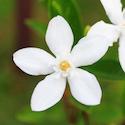Jasmine plants can be very delicate to care for and sometimes it can be quite overwhelming to see phenomena like leaf drop. This event, is a particularly annoying one, since, it can be hard to ping-point the root cause of it and correct it.
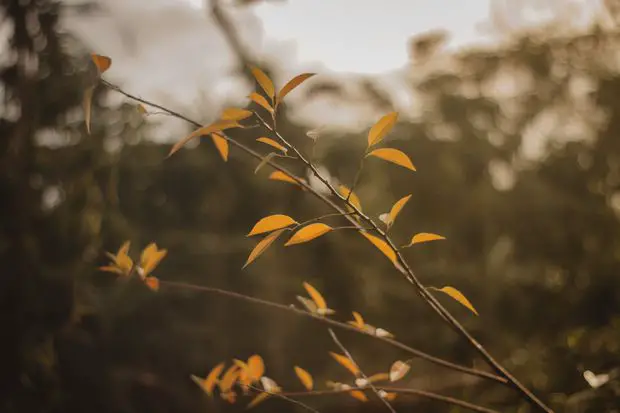
Obviously, we shouldn’t overlook the natural life cycle of a plant, where, it is a normal condition for them to gradually drop their dry and dead leaves, especially, at the lower base of the jasmine plant.
As a natural event, jasmine plants, will shed their old leaves and will grow new ones to continue the life of the plant with an uninterrupted photosynthesis process.
A very different situation is to observe that progressively, your beloved jasmine plant is losing a lot of the fresh and green leaves. This is not all that normal condition and therefore, we should know the causes why these can happen, how to avoid them and how to fix them.
Your jasmine plant is losing its leaves due to different reasons, such as, the natural life cycle of the jasmine plant, where old leaves fall off, to be replaced by new shots. There are other causes why your jasmine plant is losing leaves, that might indicate, the existence of underlying conditions in your plant. Those conditions can be due to poor caring techniques over the winter season, temperature shock, frequent transplantation, overwatering or underwatering, low light levels of exposure, pest infestations and nutrient deficiency.
Temperature Shock
Sudden changes in jasmine plant growing conditions, especially, when it comes to changes in temperature and humidity, is one of the most common causes for jasmine leaf drop. Unfortunately, this cause is also the hardest to fix. Temperature and humidity shock take place when a jasmine plant, that has been growing fine outdoors, is suddenly and frequently moved indoors. Vice-versa is also true, an indoors jasmine plant that is brought outdoors, will also experience this type of shock. This often happens as well, when you acquire a new jasmine plant from the green house “ideal conditions” to the new “suboptimal” conditions of the new home or outdoors location. During that acclimatisation period, jasmine plants lose some leaves in response to that stress.
Unfortunately, when this stage is reached, there is not much that can be done, except, to optimise the caring techniques to keep the plant alive. Don’t keep moving your plant around so much and in most cases this stress should be temporal only and the plant’s health should return progressively short after. If your intention is to relocate your indoor jasmine plant to an outdoors location, do so very gradually, to make this transition a smooth process, where you progressively increase the timing outdoors until the jasmine plant is acclimatised to its new conditions. The procedure applies to the opposite scenario, where you are bringing your outdoors plant to a new indoors location, do this in a way that your plant starts with short times inside and then slowly but progressively increase that timing. Same would apply if you move your jasmine plant from one room to another, as not all the rooms in the house will have the same temperature, if this happens too often, your jasmine plant will shed its leaves.
LOW LIGHT
Light is the most crucial factor for plants to grow both indoors and outdoors. Plants do need light to perform the process of photosynthesis, which is the process where plants use sunlight, water and carbon dioxide to make oxygen and energy in the for of carbohydrates, in other words, food for the plant.
For jasmine plants, light is a particularly important factor for them to grow optimally and get their flowers to full bloom and produce their seeds properly. The leaves of the jasmine plant, actually, do take a lot of that energy made from the photosynthesis process to grow and retain the foliage. That is why, when our jasmine plants are exposed to low light levels, they will let go some of their leaves. This is also essential to remember during the winter time, where already the plant will be dispensing with some leaves anyway, so we don’t want to contribute to that situation further, therefore, it is important to also provide the plant with enough light during the winter season.
Sometimes, providing the appropriate light levels to our jasmine plants can be challenging, even though they might be sitting close to the window where they are receiving some light or they are planted outdoors where also some natural light is also hitting the plants. Still, it could be the case that it is not enough light for our jasmine plants to keep their foliage healthy and some fixing measures might be needed to be put in place, such as, supplying artificial light or trying to move our jasmine plants around to a sunnier spot.
When it comes to using artificial lights to support your jasmine plant light levels, I found “artificial grow lights” from amazon, that turned out to work pretty well in preventing my jasmine plants from dying when needing a boost of light. To be honest, this is particularly the case during the darker winter days. I found that, they did job pretty well in recovering my stunt plants and avoiding leaves to fall off.
NUTRITION. Nutrient Deficiency
Sometimes, if your jasmine plant is losing its leaves consistently, it might be due to a nutrient deficiency in the soil. The most common nutrient deficiency in jasmine plants that lead to leaf drop phenomenon are nitrogen, phosphorus, potassium, calcium and magnesium.
Nitrogen
When there is a lack of nitrogen macronutrient, the older jasmine leaves will start turning into a lighter green tone, towards a red fall color. This, will continue to happen progressively in a short period of time, if not fixed, and ultimately, the leaves will fall off. You will also be able to identify this deficiency, as you will notice that the stems will be way thiner and shorter than before.
Phosphorus
When there is a lack of phosphorus macronutrient, the older leaves of the plant will start acquiring a dark green tone but the higher ones in the plant will start turning brown to bronze color, leading to a crispy to wrinkled condition and lastly falling off from the plant earlier than they should.
Potassium
Potassium macronutrient deficiency, will exhibit in the leaves in the form of yellowing, browning and brittleing of the margin of the leaves. The older leaves of the jasmine plant will start wilting and turning yellow, as well as, they will start crackling and the new shots that were coming through will stop their growth and will drop off the plant.
Calcium
Calcium micronutrient deficiency, will appear in the form of unusually green and distorted leaves on the upper part of the jasmine plant causing their tips to brittle, to develop abnormal shapes and eventually falling off the plant. Sometimes, this deficiency is not so obvious in the soil but the actual uptake of this mineral by the lack of watering, is what causes the symptoms. Ensure your jasmine plant is regularly watered, as per their required regime, and the situation should improve in a couple of weeks. You could add some crushed eggshells in the soil to support the calcium content in the soil bed.
Lastly, there are other nutrients like magnesium, iron, molybdenum, boron, copper and nickel that could represent a problem if scarce in the soil but probably are less of a worry in terms of your jasmine plant losing its leaves due to these deficiencies.
To keep your jasmine plant care on top of things, it is a good idea to try preventing these sort of deficiencies by regularly checking and having your soil tested, as well as, fertilizing your plants regularly. Doing this, will allow us to identify any issues as quickly as possible. Those mineral nutrients from the fertilisation sessions will be dissolved in water and the plant will be able to up take them through the root system. For this to happen and therefore, to be able to absorb all the required nutrients, the pH in the soil has to be on point (5.5-6 acidic to alkaline), which is, what jasmine plants thrive on.
OVERWATERING/UNDERWATERING
Our jasmine plants can suffer from leaf drop either because the soil where is planted is too wet or too dry. As we know by now, our jasmine plants prefer a well drained soil, rather than, completely dry or too wet, hence, if you overwater your plant or gets flooded, a fair puddle of water will be kept in the plate below where the plant is sitting on, and the roots will start to rot. If our jasmine plants get too much water in their soil, they won’t be able to absorb the nutrients and drain the water excess efficiently. This will result in them going stunt, wilt and ultimately, they will drop their leaves.
The same applies if your jasmine plants are not getting enough water. Too little water, will mean that the roots won’t be able to move through the soil and absorb the required nutrients. The outcome of this situation will be, the leaves going dry and falling off the jasmine plant.
To improve this situation and learn how to get the right amount of water, it is of good practice to insert the index finger in the soil (about two inches) and feel if it is dry or wet. Wait until the soil is on the dry side of things before you soak your plant again.
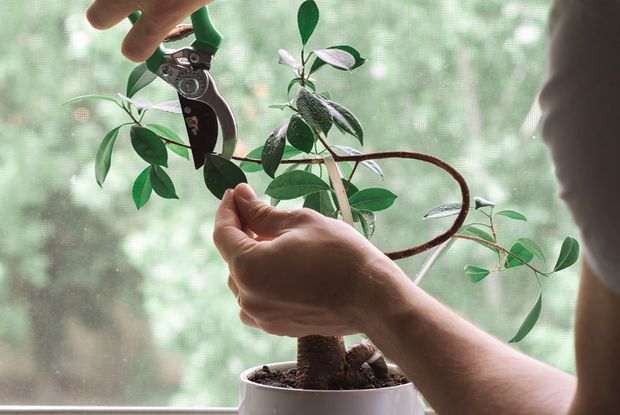
PHYSYCAL DAMAGE
Physical strain or rubbing is an obvious factor that can cause your jasmine plant to lose its leaves. Jasmines that are planted in an area frequently brushed with either people or animals or even exposed to wind currents, will very often drop their leaves. Try relocating your plants to a lower interaction area and try to plant them in an elevated to a height location where contact against the foliage would be decreased.
Low Humidity
As we know, jasmine plants are tropical species, and sometimes are really difficult to successfully grow them indoors in areas where the climate is not tropical. The way jasmine plants respond to this change in humidity is by dropping their leaves. The reason why this happens is because it is the plant’s natural response to a drier air conditions to conserve as much moisture as possible by reducing the number of leaves in the plant.
Optimal humidity levels are crucial for the successful growth of jasmine plants and getting the right percentage of humidity both outdoors and indoors, can be challenging. Since humidity is the total concentration of water vapour in the air, getting the right humidity levels at home is hard and even more challenging to maintain that level consistently. This is very important for jasmine plants to be able to maintain the photosynthesis process efficiently. When the humidity is low, the jasmine plant’s roots will take up more moisture and water from the plant to compensate from the loss, the soil will also dry out quicker and therefore the watering regimen will have to be more frequent. If the gap in between the water replacement is to broad, the plant will start dropping the leaves.
Particularly in the winter, low humidity, represents a problem to our jasmine plants, since most homes will have heaters, making the air really dry and hence, making the plant going in to shock, ultimately, affecting its foliage. Fortunately, to counterbalance this issue, jasmine plants normally go into dormancy during the winter time not needing so much water, however, dryness and low humidity will make the plat lose its leaves.
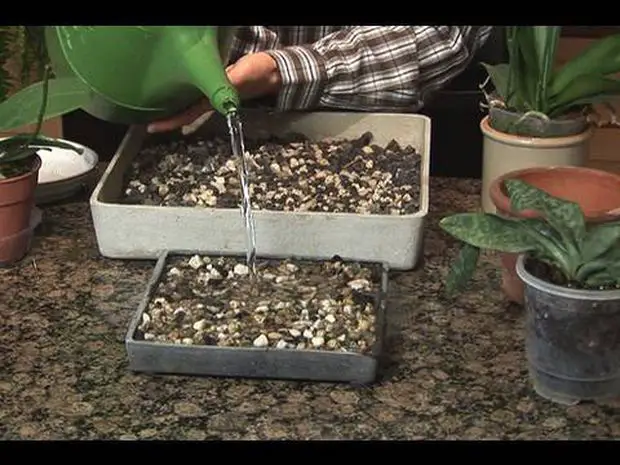
There is a good way to increase the humidity around your jasmine plant and that is the use of pebble trays underneath the pot where your jasmine is planted. This can be applied to both indoors and outdoors plant. Simply, wash some gravel, pebbles or even some clay aggregates and place them in a tray with a low level of water on it. Next, place your jasmine plant pot on top of that. This will allow for some water to remain underneath the pot and therefore, the plant’s roots won’t be able to absorb it. That water, instead, will progressively evaporate, increasing the humidity levels around the plant. This will prevent from fresh green leaves to fall off due to low humidity. It is, however, essential that you don’t pace the pot directly on top of the water otherwise the roots will be flooded and will start rotting.
Lastly, you should also spray and mist the leaves (especially the fresh and green leaves) to help preventing them from drying out and ultimately dropping.
PESTS
Common jasmine pests, such as, black and green aphids, whiteflies, mealybugs, spider mites, and scale, will chew on the leaves and suck on the sap of your jasmine plants avidly and this can lead to leaf drop.
If you spot your plant being infested by these tiny bugs, make sure you start applying remedies, as soon as possible, to save the foliage of your jasmine plant from being eaten, damaged and sadly, falling off.
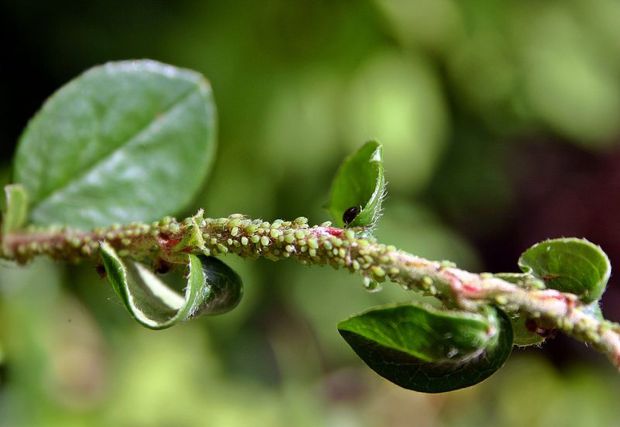
There you go! If your jasmine plant has lost some of its leaves, it is important not to panic, in this post we have covered the reasons why this event might be happening and some tips on how to fix them. Try to figure out the underlying cause that is promoting the trouble and act as quickly as possible to bring the health back to your jasmine plant in no time!
